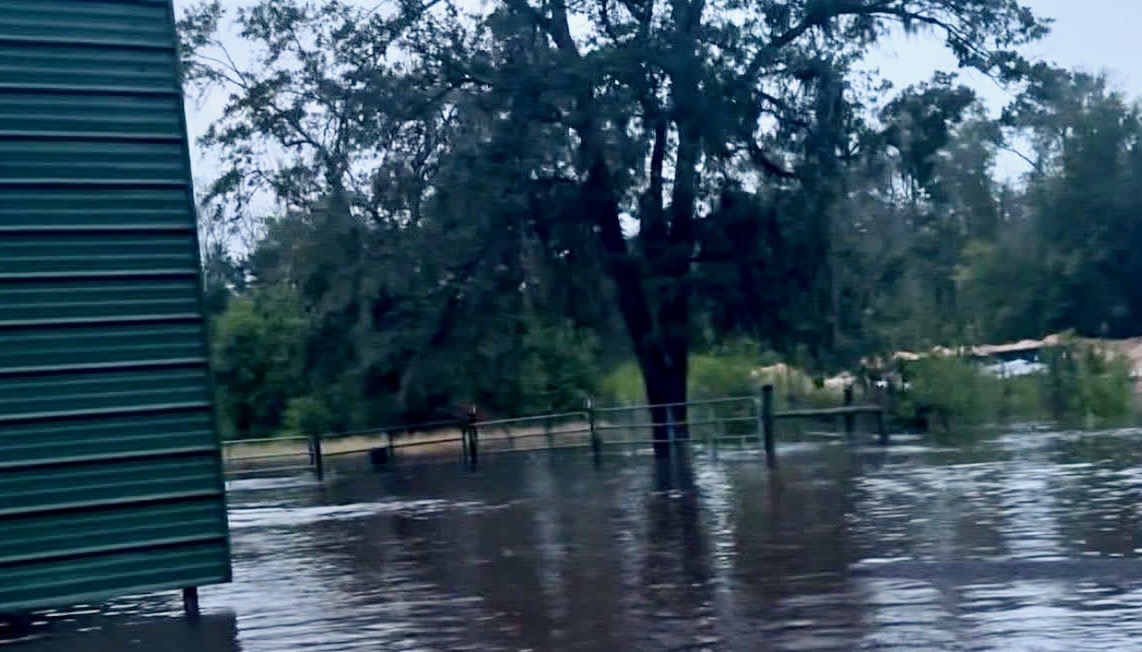
If you don’t know what bioswales or rain gardens are, don’t worry. I didn’t either until a few months ago, when I started researching how to slow down the swamp that forms in my side yard every time it rains hard.
It is Port Wentworth, after all. Most of us live barely above sea level, on land that used to be swampland. Water doesn’t just visit—it settles in.
When I decided to run for mayor, I started digging into what’s called green infrastructure. Yes, the term sounds like something you’d hear at a yoga retreat, but it’s actually a smart, cost-effective urban planning tool. Green infrastructure means using nature’s own systems—wetland plants, permeable surfaces, tree canopies—to manage water the way nature has for thousands of years.
Native plants like cardinal flowers, yellow flag irises, creeping Jenny, and swamp white oaks don’t just look good—they drink deeply. They absorb inches of water, not just drops. And they do it better than the manicured, decorative landscaping we often see.
You can’t mow down native foliage and expect the water to politely disappear. It doesn’t. It floods yards, roads, and—this weekend—a respected equestrian center.
If you haven’t seen the damage, take a look here. Washed-out paddocks, collapsed fencing, and horses and their owners displaced. It wasn’t just a mess for them—it was a warning for the rest of us.
And we’re lucky it wasn’t so much worse.
There are solutions, but they require time, labor, and that all-important word: planning. Citizens need to maintain their ditches—even if they’re technically in the city easement. That means cutting grass and clearing debris. Deeper digging is the city’s job, but regular upkeep is ours.
We also need to rethink landscaping. It should be functional, not just decorative. Thirsty plants along drainage areas can make a real difference. And for larger developments, municipalities must ask hard questions:
Are developers preserving old-growth trees?
Are they using both retention and detention ponds?
Are surfaces permeable, allowing water to drain naturally?
Are the grading and terracing correct or just fast and cheap?
Environmental planning isn’t a political trend—it’s basic science. Water is like a group of teenagers: without structure and somewhere to go, nothing good is going to happen.
We saw that play out this weekend. And while it wasn’t in Chatham County, it was close enough. These are our neighbors. Our classmates. Our teachers. Our families.
With all the concrete packed into Port Wentworth’s 16 square miles, we could be next. That’s why every current and future development must answer one simple question: Where will the water go?
Responsible resource management means using green infrastructure—not just to fix today’s problems, but to prevent tomorrow’s disasters.
We should develop with foresight. We must plan with purpose.
Citizens can work together to help mitigate small, local water problems. Elected officials should collaborate to make that happen.
Elected officials who ask the right questions and are committed to making the right choices for the future of our communities—this is who our leaders need to be.
If you want smart, responsible resource management, be sure to vote November 4. Vote like your home depends on it. Because it just might.
Also, click here to support their GoFundMe. I know several people whose children took riding lessons there, and have nothing but praise for the work this family does.